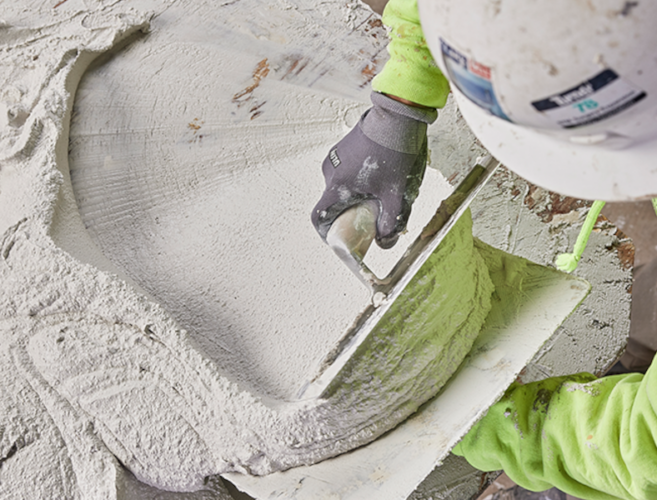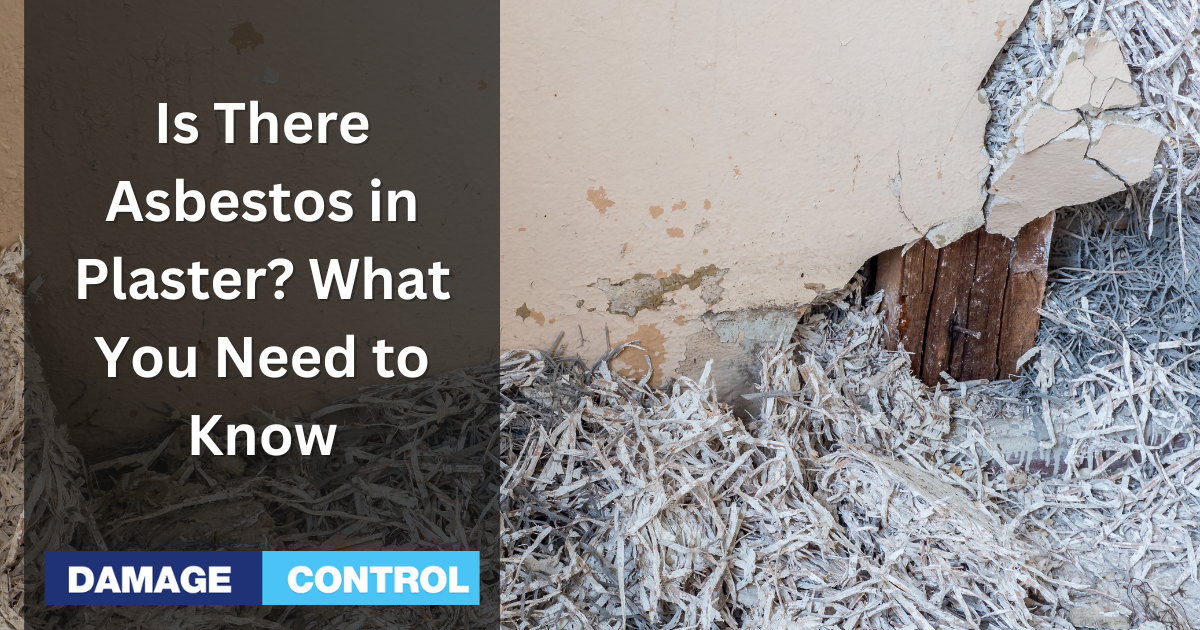Are you wondering if there is asbestos in your plaster walls? Asbestos is a mineral that was commonly used in building materials until the 1980s when its dangers became known. It was used for its heat-resistant and insulating properties, making it a popular choice for plaster walls. If your home was built before the 1980s, there is a chance that your plaster walls contain asbestos.
Asbestos in plaster can pose a serious health risk if it becomes airborne and is inhaled. When asbestos fibers are inhaled, they can become lodged in the lungs and cause a variety of health issues, including lung cancer, mesothelioma, and asbestosis. It is essential to determine if your plaster walls contain asbestos and take appropriate action if necessary.
In this article, we will explore the topic of asbestos in plaster in detail. We will discuss what plaster contains asbestos, how to identify asbestos in plaster, and what to do if you suspect that your plaster walls contain asbestos. We will also provide you with some tips on how to safely remove asbestos from your plaster walls and ensure that your home is safe for you and your family.
What is Asbestos?
The History of Asbestos
Asbestos is a naturally occurring mineral that has been used for centuries due to its heat-resistant properties. It was widely used in construction and manufacturing during the 20th century, particularly between the 1940s and the 1970s. Asbestos was used in a variety of products, including insulation, roofing materials, and even clothing. It was also used in plaster to help with insulation.
The Dangers of Asbestos
While asbestos was once widely used, it is now known to be a dangerous substance. Asbestos fibers are microscopic and can easily become airborne, making them easy to inhale. Once inhaled, these fibers can remain in the lungs for years, leading to a variety of health problems. Exposure to asbestos has been linked to lung cancer, mesothelioma, and other respiratory diseases.
It is important to note that not all plaster contains asbestos. However, if your home was built or renovated between the 1940s and the 1970s, there is a chance that it may contain asbestos. If you suspect your plaster contains asbestos, it is important to have it tested by a professional.
Asbestos in Plaster

How Asbestos was Used in Plaster
Asbestos was commonly used in plaster for its insulating properties. It was added to the plaster mix to increase its strength and durability, making it an ideal material for walls and ceilings. Asbestos was also used in joint compounds and texture coatings applied to walls and ceilings. The use of asbestos in plaster continued until the 1970s when its harmful effects on human health were discovered.
Identifying Asbestos in Plaster
If you suspect your plaster contains asbestos, it is important to have it tested by a professional. Asbestos in plaster is not always visible to the naked eye, and it can be difficult to identify without proper testing. However, some warning signs may indicate the presence of asbestos in plaster.
One of the main indicators of asbestos in plaster is the age of the building. Most types of asbestos-containing plaster were manufactured between 1942 and 1974. If your house was built or renovated during that time, it's a good idea to have it tested. Another warning sign is the texture of the plaster. Asbestos-containing plaster may have a rough, sand-like texture or be smooth and glossy.
To identify asbestos in plaster, a sample of the material must be taken and tested in a laboratory. The sample should be collected by a professional trained in handling asbestos-containing materials. It is important to avoid disturbing the material during the sampling process, as this can release asbestos fibers into the air.
What Are the Health Risks of Asbestos in Plaster?
Asbestos is a naturally occurring mineral that was commonly used in building materials until the 1980s. Plaster, in particular, was a popular material for asbestos use due to its insulating properties. However, when plaster containing asbestos is disturbed, it can release tiny fibers into the air that can be inhaled and cause serious health problems.
Exposure to asbestos can lead to a variety of lung diseases, including asbestosis, lung cancer, and mesothelioma. Asbestosis is a chronic lung disease that can cause shortness of breath, coughing, and permanent lung damage. Lung cancer is a malignant tumor that can spread to other parts of the body, and mesothelioma is a rare and aggressive cancer that affects the lining of the lungs, abdomen, or heart.
The risk of developing these diseases depends on the amount and duration of asbestos exposure. People who have been exposed to asbestos for a long time or at high levels are at the greatest risk. However, even low levels of exposure can increase the risk of developing lung cancer or mesothelioma.
It is important to note that the symptoms of asbestos-related diseases can take years or even decades to appear. This means that people who were exposed to asbestos in the past may not experience symptoms until many years later.
If you suspect that your home or workplace contains asbestos in plaster, it is important to have it tested by a professional. If asbestos is found, it should be removed by a licensed asbestos abatement contractor to ensure that it is done safely and properly.
Removing Asbestos in Plaster
DIY vs. Professional Removal
When it comes to removing asbestos in plaster, you have two options: DIY or professional removal. While DIY removal may seem like a cost-effective option, it is not recommended. Asbestos fibers can become airborne during removal, which can be hazardous to your health. Professional removal companies have the necessary equipment and expertise to remove asbestos in plaster safely.
Professional removal companies will also ensure that the asbestos is disposed of properly. Asbestos is classified as hazardous waste and must be handled and disposed of in accordance with state and federal regulations. DIY removal may result in improper disposal, which can lead to fines and legal consequences.
Safety Precautions for Asbestos Removal
If you hire a professional removal company, it is important to ensure they take the necessary safety precautions. The removal company should provide you with a detailed plan outlining the removal process and safety measures they will take.
During removal, the area should be sealed off to prevent asbestos fibers from spreading. The removal workers should wear protective clothing, including respirators, to prevent inhalation of asbestos fibers. The removal workers should also use wet methods to keep the asbestos fibers from becoming airborne.
After the removal process is complete, the area should be thoroughly cleaned and tested to ensure that all asbestos fibers have been removed. The removal company should provide you with a clearance certificate verifying that the area is safe for occupancy.
Conclusion
In conclusion, it's vital to be aware of the potential presence of asbestos in older plaster in our homes and buildings. Asbestos was commonly used in plaster and other building materials for many decades due to its fire-resistant properties. However, its fibers are highly toxic when inhaled, leading to serious health issues such as lung disease and cancer. If you suspect your plaster contains asbestos, do not attempt to handle it yourself. Instead, hire a professional asbestos abatement company to manage the situation safely.

